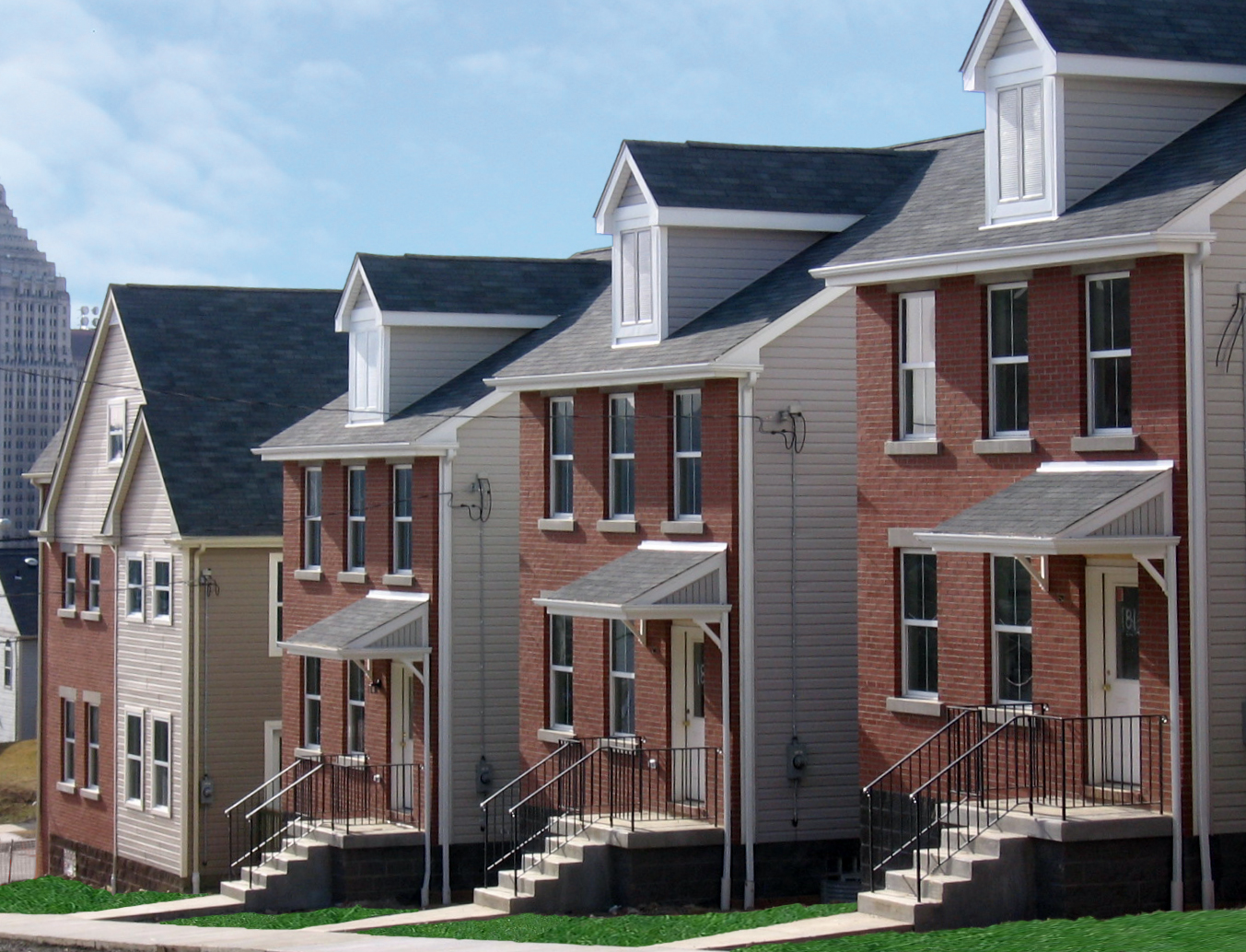Select a Topic
History and Background
The Housing Opportunities for People Everywhere, or HOPE VI Program, was an urban redevelopment effort aimed at addressing severely distressed public housing projects around the country. The program provided grants to Public Housing Authorities (PHAs) to renovate or demolish obsolete or distressed public housing and replace it with mixed-income housing by leveraging private and public resources.
The HOPE VI Program arose from the National Commission on Severely Distressed Public Housing report, submitted to Congress on August 10, 1992. In their National Action Plan, the Commission determined that about 6% of the 1.4 million existing public housing dwellings (about 86,000 units) were in "severely distressed" condition and recommended that these units be eradicated by the year 2000. The report specifically recommended urban revitalization in three general areas:
- Social and community services to address resident needs,
- Physical improvements, and
- Management improvements.
Congress responded immediately to the Commission’s report, and on October 6, 1992, appropriated the first $300 million for what was originally called the “Urban Revitalization Demonstration,” now known as HOPE VI. Through HOPE VI, PHAs could apply for revitalization grants which provided funds for demolition, rehabilitation, new construction, resident relocation, and community and supportive services for residents. PHAs could also apply for demolition-only grants and planning grants, which were used to plan the revitalization process. Another type of revitalization grant, Main Street Revitalization Grants, was created in 2003. These grants continue today and are available to local governments in small communities for main street revitalization projects, which may be unrelated to public housing.
Legacy and Accomplishments
Over the history of the program, 262 HOPE VI revitalization grants were made to PHAs in 36 states, districts, and territories. The program was responsible for the demolition of 98,592 public housing units and the construction or substantial rehabilitation of 97,389 replacement units. The HOPE VI program helped transform a number of severely distressed neighborhoods, making the program popular with both parties of Congress.
In October 2000, HOPE VI was honored with national recognition as a recipient of the Innovations in American Government Award, one of the nation’s most prestigious public service award programs. Specifically, HOPE VI was recognized for its Mixed-Finance Public Housing program, “an innovative approach that is transforming some of the nation’s most severely distressed public housing from sources of urban blight to engines of neighborhood renewal.”
Grants Awarded
| Awards | Grant FY Totals |
Funding |
| 35 | Planning Grants 1993-1995 |
$14,752,081 |
| 262 | Revitalization Grants 1993-2010 |
$6,281,287,817 |
| 285 | Demolition Grants 1996-2003 |
$391,585,505 |
| 45 | Neighborhood Networks 2002-2003 |
$9,967,500 |
| 21 | Main Street Grants 2005-2009 |
$15,456,009 |
| 648 | Total |
$6,713,048,912 |
HOPE VI Appropriations and Funding History
HOPE VI was funded solely through annual appropriations bills from FY 1993-1998. In FY 1999, Congress passed authorizing legislation for HOPE VI within the Quality Housing and Work Responsibility Act of 1998 (Public Housing Reform Act) as Section 24 of the U.S. Housing Act of 1937. Section 24 was implemented in the FY 2000 Notice of Funding Availability, and was reauthorized in conjunction with the American Dream Downpayment Act of 2003.
However, due to public scrutiny and criticism for loss of affordable housing and displacing poor families, the Bush and Obama Administrations both stopped requesting new funding for the program. In FY 2012, Congress provided no new funding for HOPE VI for the first time since the program’s inception. Instead, Congress funded the Obama Administration’s request for a new replacement program, the Choice Neighborhoods Initiative (CNI), which would expand the scope of HOPE VI beyond public housing to other assisted housing, with a greater focus on neighborhood revitalization.
HOPE VI Today
Although the HOPE VI program has not been funded since 2011, HUD's Office of Urban Revitalization continues to track awardees progress on their HOPE VI grant and finish closing-out revitalization grants.
HOPE VI's legacy continues to directly inform and influence the Choice Neighborhoods Initiative, HOPE VI Main Street grants, Community and Supportive Services, and Mixed-Finance programs.

 HOPE VI Data Compilation and Analysis
HOPE VI Data Compilation and Analysis